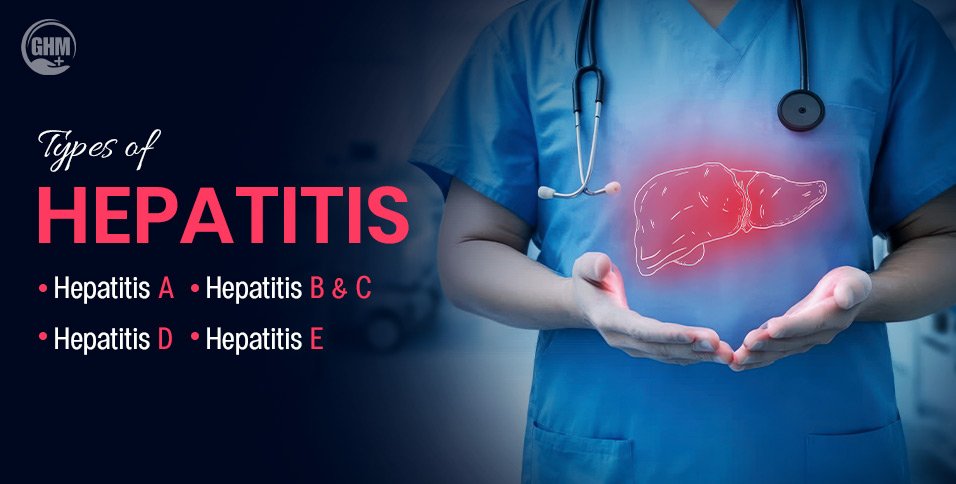Imagine your body’s most vital filter, your only liver, hints at some struggle. It works overtime, day after day, to keep you healthy, remove toxins, and help digest your food. But what happens if this powerhouse organ becomes inflamed? That’s precisely what hepatitis means: inflammation of the liver. This swelling can seriously mess with all its crucial jobs. Indeed, various factors can cause this inflammation. Viruses are often the main culprits, to be sure. However, sometimes alcohol, certain medications, or even our own immune system can also trigger it. In this blog, we’ll dive deep into the primary types of hepatitis, specifically caused by viruses. We’ll explore their unique characteristics and discuss practical ways to prevent them. Just remember, this information is purely for educational purposes. It never replaces professional medical advice.
What is Viral Hepatitis?
Viral hepatitis means your liver is inflamed because a virus has attacked it. That’s it. Your liver, the organ that filters everything from food to medicine, isn’t happy, and the reason is a virus.
Now, not just any virus causes this. There are 5 types of it. And we call it is as Hepatitis A, Hepatitis B, Hepatitis C, Hepatitis D, and Hepatitis E. Think of them as distant cousins in the same big joint family — similar, but each with a different way of spreading and affecting your body.
- Hepatitis A spreads through contaminated food or water. Imagine eating street food made with dirty hands.
- Hepatitis B and C are spread through infected blood. A reused needle at a shady clinic, for example. That’s a risk.
- Hepatitis D only shows up if you already have Hepatitis B.
- Hepatitis E spreads in places with poor sanitation, like flood-hit areas.
Every year, 300 million+ people live with some form of Hepatitis disease. That’s more than the entire U.S. population.
Understanding these types of hepatitis pushes us to stay aware and make safer choices.
The Five Main Types of Hepatitis: A Detailed Look
A. Hepatitis A (HAV)
Hepatitis A is short-term, but it can harm you. It spreads through contaminated food or water, often in places with poor sanitation or hygiene. Eating something prepared with unwashed hands or drinking unsafe water is all it takes.
The symptoms? Think constant fatigue, nausea that lingers, upper belly pain, dark urine, and yellowing of the skin or eyes. But here’s the tricky part — some people won’t feel a thing. No signs. No warnings.
Most recover completely. And once they do, they’re protected for life. That’s one silver lining.
Prevention is where the real power lies. Wash your hands properly. Be picky about what you eat and drink, especially when traveling. Clean habits go a long way with this type of hepatitis.
And yes, a safe vaccine exists — especially important if you’re in a high-risk area or planning to travel where outbreaks are more common.
B. Hepatitis B (HBV)
Hepatitis B isn’t always short-lived. It can be acute — or turn into a long-term battle. Chronic HBV is where the real risk lies. Over time, it can quietly lead to cirrhosis or even liver cancer if left untreated.
This virus spreads through infected blood and bodily fluids. That means sharing needles, poor medical practices, or even transmission from mother to child during birth. In many cases, the infection happens silently — no big signs, no major symptoms. Especially in chronic cases, it stays hidden until the liver takes a serious hit.
The symptoms, when they do show up, feel similar to Hepatitis A: fatigue, nausea, stomach pain, dark urine, and jaundice. But unlike HAV, many with HBV don’t clear the virus on their own.
Here’s the deal — most adults recover fully from the acute phase. But infants infected at birth? They’re at much higher risk of developing chronic HBV.
So, prevention is key. Stay cautious around anything involving blood. And yes, there’s a highly effective vaccine — already part of routine shots for children. One of the smartest shields against this type of hepatitis.
C. Hepatitis C (HCV)
Hepatitis C is often called a silent killer, and for good reason. It usually sticks around for the long haul. Most people don’t feel a thing for years, while the virus slowly harms the liver. If left unchecked, it can lead to cirrhosis or even liver cancer.
This virus spreads mainly through blood-to-blood contact. That includes things like sharing needles, unsafe medical injections, or receiving unscreened blood, though that’s now rare in many developed countries. Transmission from mother to child can happen, too. Sexual transmission? It’s possible, but less common.
Symptoms, if they appear, are subtle — tiredness, joint pain, and a drop in appetite. Nothing loud or obvious. That’s why many people don’t even realize they have this type of hepatitis until years later.
Some lucky few clear the virus on their own. But most people develop a chronic infection.
There’s no vaccine yet. That’s the tough part. But here’s the good news — treatments today are incredibly effective, and cure rates are higher than ever. Still, prevention starts with avoiding all risky blood contact. Sterile equipment isn’t optional — it’s essential.
D. Hepatitis D (HDV)
Hepatitis D doesn’t walk in alone. It only shows up if you already have Hepatitis B. That’s what makes it different. Think of it as a virus that tags along — and then turns the damage up a notch.
It spreads through contact with infected blood or bodily fluids, just like HBV. But when both viruses are present, liver disease can move faster and hit harder.
The symptoms? Often the same as Hepatitis B — fatigue, belly pain, yellowing of the skin. Only now, things may get worse, quicker. Over time, this type of hepatitis can speed up liver damage more than HBV alone.
Here’s the important part: you can’t get Hepatitis D unless you already have Hepatitis B. That’s why prevention starts there.
Get protected from B, and you automatically shut the door on D.
E. Hepatitis E (HEV)
Hepatitis E mostly comes and goes. It doesn’t linger like some of the others. For most people, it feels like a short-term flu with a liver twist, and the body recovers on its own.
But there’s one clear red flag: pregnant women. In that group, HEV can turn serious, even fatal. That’s not common, but it’s not something to overlook either.
It spreads through contaminated water and food. So, places with poor sanitation or heavy flooding? The risk goes up. And in some parts of the world, undercooked pork or shellfish has also been linked to outbreaks.
The symptoms? Nothing dramatic at first. Maybe a light fever. Some fatigue. Appetite fades. Then maybe nausea, belly discomfort, or jaundice. Still, many don’t notice anything until it passes.
The best way to avoid this type of hepatitis? Stick to clean water. Cook your food well. Wash your hands, especially when you travel.
There’s a vaccine, but it’s not widely available yet. So for now, prevention is still your best option.
General Symptoms of Hepatitis (Across Types)
Let’s be real — hepatitis doesn’t always shout. Sometimes, it just whispers. Some people feel nothing at all. But when symptoms do show up, here’s what you might notice:
- Constant fatigue or weakness, even after rest
- Nausea or vomiting that lingers
- Pain near the upper right side of your belly
- Loss of appetite, even for favorite foods
- Dark-colored urine (think cola)
- Pale or clay-colored stools
- Yellowing of the eyes or skin — that’s jaundice
- Achy joints without any injury
No matter the types of hepatitis, these symptoms can creep in slowly. So if your body feels “off” for a while, don’t brush it off.
Prevention Strategies: Protecting Yourself from Hepatitis
Let’s be honest — you can’t control everything. But when it comes to hepatitis, a few smart habits do make a big difference.
Start with vaccines. Hepatitis A and B have reliable vaccines. They’re already part of routine childhood shots in most countries. If you never got them, check with your doctor. It’s a simple step, and it’s worth it.
Now, hygiene. Yes, plain old handwashing. Do it right, do it often — especially after the restroom or before food prep. It’s underrated, but it works.
When you travel, don’t just eat what looks good. Ask: Is it clean? Go for bottled water. Choose freshly cooked meals. These choices are more important than you realize, especially since some types of hepatitis spread through contaminated food and water.
Also, never share things like razors, toothbrushes, or syringes. And if you’re getting a tattoo or piercing? Make sure everything’s sterile. Better safe than sorry.
Finally, don’t stay in the dark. If you’ve ever been exposed or just feel unsure, get tested. Knowing early can save your liver — and your peace of mind.
When to Seek Medical Attention
If something feels off, like fatigue, yellow skin, pain that won’t go away — don’t brush it aside. See a doctor. It might be nothing, or it could be early signs of hepatitis. Either way, getting checked early helps prevent bigger issues later.
Remember, some types of hepatitis don’t show symptoms at first. So if there’s even a small concern or possible exposure, act now.
This blog shares helpful and friendly info, but let me tell you, this is not medical advice. Always talk to a healthcare professional for anything health-related.
Key Takeaways
Understanding the types of hepatitis isn’t just about knowing what each one does. It’s about knowing what you should be more aware of — depending on your lifestyle, where you live, how you travel, or even your medical history. Not every type poses the same risk to everyone. That’s where personal context matters more than just facts.
The truth is, there’s no one-size-fits-all takeaway here. If you’re a frequent traveler, Hepatitis A and E should stay on your radar. If you work in healthcare or had any past medical exposure, Hepatitis B and C deserve attention. Planning for parenthood? Hepatitis B and E both carry weight in different ways.
So before you worry or jump to conclusions, research, reflect, and if needed, consult a medical professional based on your own story.
This blog gives you the map. What you do next depends on where you are, and where you’re headed.


















